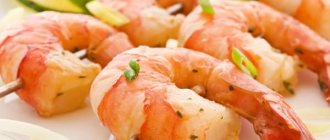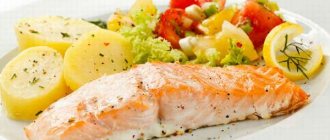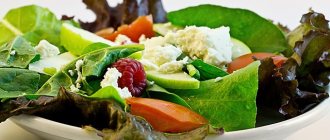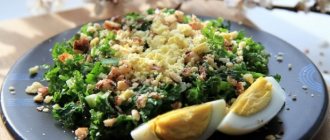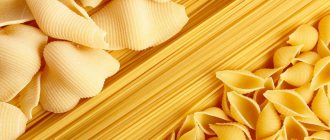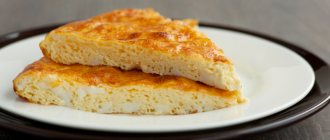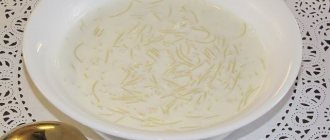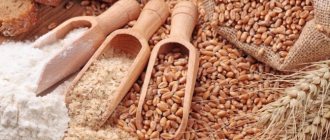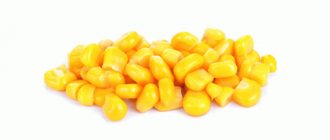All over the world, fish is considered an extremely healthy product.
It is part of diets aimed at losing weight, strengthening the cardiovascular system, and correcting diabetes. For many people, fish has become the personification of a balanced diet and the best substitute for meat. However, is everything so clear regarding patients with gastritis? Let's consider the effect of fish dishes on the gastrointestinal tract.
What is the benefit
The main advantage of fish products is their biochemical composition. They are rich in proteins, optimally balanced in terms of essential amino acids, vitamins (A, D, B) and minerals (iodine, fluorine, zinc, copper). It is these components that determine the beneficial effect of fish on the body:
- regulation of metabolism;
- normalization of cholesterol;
- prevention of cardiovascular diseases;
- stabilization of thyroid function;
- strengthening bone tissue;
- activation of the brain.
Fish generally has a positive effect on the stomach due to its ease of digestion. But its digestibility largely depends on the fat content and method of preparation.
Information. Sometimes fish does more harm than good. Caught in polluted waters, it can become a source of heavy metals and other substances toxic to the human body. And if fish dishes are not properly cooked, there is a risk of infection with parasitic diseases.
Prohibited foods and varieties
If you have gastritis, it is strictly forbidden to eat fatty, smoked, fried and pickled fish. This is quite a heavy food, which will only further irritate the inflamed walls of the stomach.
Also, people suffering from gastritis should completely avoid canned fish. Such products contain spices and carcinogens that have a detrimental effect not only on the digestive system, but also on the entire body as a whole.
Salmon is also prohibited. This healthy, but very fatty fish should not be consumed in any form for gastritis. It is contraindicated even during a period of stable remission.
Which one to choose
When talking about the properties of fish products, it is necessary to take into account that they are determined primarily by the type of fish. For example, sea fish is considered more useful because it contains more trace elements (especially fluorine and iodine). However, it also contains more extractive substances, which is not beneficial for patients with hyperacid gastritis.
Fat content indicators are very important. According to their size, fish varieties are divided into 3 groups:
- Skinny (up to 4% fat): river perch, pike perch, navaga, hake, pollock, cod, flounder, grenadier, pike, trout.
- Medium fat (4-8% fat): sea bass, carp, pink salmon, salmon, catfish, herring.
- Fatty (over 8% fat): some types of herring, halibut, all sturgeon, lamprey, eel.
For inflammation of the stomach, the permitted fat content is 4% or less. Fatty varieties are rich in polyunsaturated fatty acids and are useful for people with heart and vascular diseases, but their use for gastritis can negatively affect the digestive processes. The calorie content of different types of fish is also very variable. Nutritional value of 100 g of product in increasing order:
- cod – 69 kcal;
- pollock – 79;
- flounder – 83;
- crucian carp – 102;
- sea bass – 122;
- pink salmon – 147;
- sturgeon – 164;
- salmon – 217 kcal.
Recommended types of fish
Allowed fish varieties for inflammation of the stomach may differ, taking into account the pH balance in the digestive tract.
With increased acidity
If excess production of hydrochloric acid in the stomach has been diagnosed, then a special diet is prescribed, excluding the consumption of fatty and fried foods, various smoked meats, and marinades. To improve digestion and restore the gastrointestinal mucosa, fish should be included in the patient’s daily diet. For gastritis with a high level of acidity, the following varieties with low fat content are allowed:
- hake;
- zander;
- pollock;
- whiting;
- pink salmon;
- cod;
- flounder;
- navaga;
- pike;
For hyperacid gastritis, most nutritionists advise eating sea fish with a fat content of less than 4%. It is also recommended to give preference to red varieties: pink salmon and trout. They contain an acceptable level of fat, are quickly digested, do not irritate the gastrointestinal mucosa, and in addition have a wonderful taste.
With low acidity
Due to insufficient production of hydrochloric acid, the pH level in the stomach decreases, which is manifested by a number of dyspeptic symptoms. For hypoacid gastritis, a diet is prescribed that helps increase acidity. A patient with this diagnosis is advised to give preference to fermented milk products, citrus fruits, and sauerkraut. The daily menu must include low-fat fish:
- zander;
- cod;
- hake;
- pollock;
- pollock;
- flounder;
- vobla;
- navaga;
- lemonema;
- mullet.
During the period when symptomatic manifestations subside, it is allowed to eat several pieces of boiled or baked mackerel, as well as pickled herring.
Herring must be pre-soaked in iced tea or pasteurized milk (over 4 hours).
Sometimes it is allowed to add low-fat smoked fish, caviar and milk to the diet. In limited quantities, these products will not harm the digestive tract, but, on the contrary, will increase the production of hydrochloric acid.
How to cook
The method of preparing fish dishes is also important. Smoked, salted, fried, pickled, and canned fish are definitely prohibited for gastritis. Salt, spices and preservatives irritate the gastric mucosa, increasing inflammation. Carcinogenic substances formed during frying and smoking are difficult to digest and provoke the development of cancer.
You can eat salted fish only after soaking or with a slight addition of salt. The fish can be stewed, boiled, steamed, in a slow cooker, or baked in the oven.
It goes well with thermally processed vegetables: potatoes, carrots, onions, zucchini. During the cooking process, many people like to sprinkle the fish with lemon juice, which successfully emphasizes its taste.
If the acidity of the gastric contents is high, you need to be careful with such additives. Of course, a few drops of lemon juice will not cause serious damage, but you still shouldn’t generously cover the fillet with pieces of citrus.
Dish recipes
It should be remembered that fried foods are contraindicated for patients with gastritis. Therefore, you should choose recipes with fish in which the product is boiled or baked.
Fish soup
How to cook fish for a patient with gastritis? One good option is simple fish soup. Low-fat boiled fish for gastritis is allowed even during an exacerbation. The soup recipe is as simple as possible:
- fillet of lean white fish is boiled in salted water with the addition of potatoes and carrots;
- the finished soup is whipped with an immersion blender until it becomes a liquid puree;
- The dish is served warm.
During remission, fish soup does not need to be pureed; you can leave vegetables and fillets in pieces, and add fresh herbs for flavor.
Baked fish
Baked fish turns out very tasty. You can cook it in the oven or slow cooker. To prevent a golden brown crust from forming when baking in the oven, the baking dish can be covered with foil. Fillet or steak baked in a special sleeve turns out to be very tasty.
So, fish is a necessary food product for a patient with gastritis. It is recommended to choose low-fat varieties. It is best to steam fish dishes or simmer them with a small amount of water. You can also prepare fish soup and bake fillets with milk or sour cream sauce.
In the forefront
Some varieties of fish are widely popular and popular among the people. They are present on the festive table and on the daily menu. However, many people don’t even think about how safe they are for the stomach.
Herring
As a rule, herring is salted or smoked.
In the latter case, it is clearly contraindicated in patients with gastritis, regardless of its form. But with salted fish everything is a little more complicated. Since salt significantly stimulates the production of hydrochloric acid, it is better to avoid it if the pH of the gastric contents is low. In hypoacid conditions, you can eat herring only after soaking and in small volumes, since it is a fairly fatty product. It is better to soak it in milk or cooled tea for 8-12 hours. After soaking for twelve hours, the salt concentration in the fish decreases by 3.5 times. This herring should be eaten in combination with neutral foods like mashed potatoes or rye bread.
Advice. You can cook herring yourself in a lightly salted version. Stir 1 tbsp in 3 cups of boiling water. l. salt and 1 tsp. Sahara. Place 2-3 fish in the brine and put them in the refrigerator for a couple of days. The concentration of salt in such herring is very small, so it can be eaten without prior soaking.
Mackerel
This fish is a record holder for the content of omega-3 fatty acids, vitamin B12, potassium and phosphorus.
200 g of fish is enough to meet the daily requirement for these substances. However, mackerel is a fairly fatty and high-calorie fish (191 kcal per 100 g), so it can be eaten with gastritis only during the period of remission. Preferred heat treatment methods: baking, steaming, grilling. This fish is safer for patients with hyper- and normoacid inflammation of the stomach, since in conditions of a sufficient (and even excessive) amount of gastric juice it can be completely digested, despite its fat content. And with reduced gastric secretion, when the digestion process is difficult, the amount of mackerel consumed should be limited to one small piece per day.
red fish
Red fish is an extremely healthy product. It is widely used for preparing dishes as part of the Mediterranean diet, which, in addition to fish, includes fresh vegetables and fruits, grains, and olive oil.
Important! It has been proven that if you eat red fish at least once a week, the risk of developing a heart attack is reduced by more than 2 times, and stroke by 22%. In addition, it was noted that residents of coastal areas are less likely to suffer from iodine deficiency.
However, not all red fish are good for gastritis. Fatty varieties such as salmon, chum salmon, and salmon should be avoided. They can be used only during the period of remission by patients with preserved acidity. At elevated pH values, trout is more preferable - this is the most dietary variety of red fish.
Cooking fish should follow the general rules: steamed, in the oven, in a slow cooker. Smoked and salty foods are prohibited. Lightly salted trout can be eaten in small quantities for hypoacid gastritis.
Caviar
When talking about delicious varieties of fish, one cannot fail to mention caviar.
This product is very beneficial for the body due to the content of proteins with a complete amino acid composition, fatty acids, lecithin, minerals, and vitamin A. The negative side is the high concentration of cholesterol in caviar and its ability to stimulate the secretion of digestive juice. That is why the product is prohibited for acute, chronic hyperacid and erosive gastritis.
In hypoacid conditions, it must be strictly limited (no more than 50 g per day) due to the high fat content of the product. And of course, you shouldn’t eat it as part of a sandwich generously greased with butter. It is better to add caviar to dietary salads and sauces. If you absolutely want to make sandwiches with caviar, then you need to take rye bread and replace the butter with soft, low-fat cheese.
You need to be very careful with industrially produced salted caviar. Firstly , it is often too salty. Secondly, it is usually sold in cans, which contain substances that are toxic to the stomach.
The safest way is to salt the caviar yourself. To do this, you need to boil water with 60 g of salt and a couple of bay leaves. Pour brine over the caviar, cleared of films, and soak in it for 20-30 minutes. Then drain the liquid through a sieve, let it drain well, and place the caviar in a glass container. This way you can prepare red caviar, pike caviar, carp caviar, cod caviar and other river or sea fish. It can be stored in the refrigerator for no more than 3 days.
Why can't you eat salmon?
Despite the general positive characteristics of red fish, not all of its varieties can be consumed for gastritis. So, if you have stomach problems, you should avoid salmon for the following reasons:
- Salmon itself is considered a fatty fish, so it can have a negative effect on an inflamed stomach. Fish with gastritis is contraindicated with both high and low acidity.
- During periods of remission, fish can be consumed, however, in limited quantities. It’s better to stick to less fatty varieties of fish.
- Eating canned, smoked and salted salmon is strictly contraindicated. The best option is steamed salmon fillet.
For different forms of the disease
In the acute stage of the disease, it is allowed to eat skinny fish in the form of steam cutlets with a minimum amount of salt. As the exacerbation subsides, the diet gradually expands, and the possibility of consuming fish products is determined by the type of acidity.
With normal and hyperacid inflammation, you can eat lean and medium-fat varieties of fish. Enough has already been said about the methods of their preparation; they do not depend on the specific type of inflammation. You can cook the fish as a whole piece; it is not necessary to mince it. The amount of spices and oil must be strictly regulated. It is allowed to sprinkle the fish with a little olive oil during cooking.
For erosive gastritis , the same fish varieties are allowed, but it is better to make boneless cutlets or fillets from them so as not to injure the surface of the erosions. With this type of inflammation, salted (even lightly salted) fish is strictly prohibited.
Against the background of a hypoacid and atrophic process, preference should be given to low-fat fish products without adding oil. With a low concentration of hydrochloric acid and digestive enzymes, fatty foods are not completely digested, rotting processes in the stomach begin, and inflammation intensifies.
Red caviar for gastritis with high acidity is possible or not
Red caviar has long ceased to be something rare. It is sold in almost every market and is presented in a wide range. Almost everyone knows that caviar is very beneficial for the body, so the advisability of its use is beyond doubt. But what about patients with gastritis? Is it possible to have red caviar for gastritis? The product should be consumed with great caution, as caviar increases the acidity of gastric juice. You can eat caviar only in small quantities during the remission stage of the disease. Read about the benefits of eating red caviar for gastritis in the next article.
Compare with meat
Proteins of fish origin are absorbed faster and easier than meat proteins.
If on average it takes 2-3 hours to digest fish in the stomach, then for most types of meat it will take 5-6 hours. At the same time, the fish is digested almost completely, and the meat is only 85%. Compared to meat, fish products have lower calorie content and a low concentration of extractive substances that stimulate the production of gastric juice. Therefore, for hyperacid forms of gastritis, fish is safer. The lower content of connective tissue fibers makes it possible to include fish in the diet in uncrushed form, while meat for gastritis is recommended to be minced.
However, it should be noted that fish dishes are more palatable than meat dishes. Therefore, they are not recommended to be included in the daily menu. The optimal frequency of eating fish is 3 times a week. In terms of vitamin and mineral composition, fish and meat are not rivals, but allies. In both products, the content of useful chemical compounds is quite high; they harmoniously complement each other.
Experts' opinion. When asked what is healthier for the body - fish or meat, nutritionists answer unequivocally: both. Alternating meat and fish dishes in the diet is the basis of a balanced diet.
Salted fish for gastritis
Salted fish may be allowed for some forms of gastritis and always within “reasonable limits”. However, it must be prepared independently, at home, without using a large amount of salt and seasonings. This fish is indicated for gastritis with low acidity. For gastritis with high acidity, salted fish is prohibited for consumption.
Herring for gastritis
Store-bought salted and smoked herring are definitely contraindicated for gastritis. However, there is an exception, if the patient does not have an exacerbation of the disease and does not have gastritis with high acidity, then herring can be included in the diet in moderation. It should be homemade, that is, salted and seasoned in moderation. For a recipe for making herring at home, see below.
Recipes
We invite you to prepare dishes that can be eaten for any form of chronic gastritis.
Pike-perch in leek leaves
Compound:
- 400 g pike perch;
- 7 leek leaves;
- 2 onions;
- 1 tsp. lemon juice;
- 3 sprigs of dill;
- 2 tbsp. l. olive oil;
- salt to taste.
Action plan:
- Cut the onion into cubes and simmer in a frying pan until transparent.
- Finely chop the dill.
- Throw leek leaves into boiling water, cook for a couple of minutes, place in a colander and rinse with cold water.
- Cut the pike perch fillet into 2 parts.
- Place 3-4 leek sheets overlapping each other on a cutting board.
- Place the fish on top, lightly salt and sprinkle with lemon juice.
- Place stewed onions and dill on the fillet.
- Wrap the pike perch in onion leaves and place in a covered dish greased with olive oil.
- Bake in the oven for 20 minutes at 180 degrees.
Steamed fish cutlets
Compound:
- 500 g fillet of any lean fish;
- 50 g stale bread;
- 100 ml skim milk;
- 100 g onions;
- 1 egg;
- salt to taste.
Action plan:
- Pass the fish fillet and onion through a meat grinder.
- Soak the bread in milk, chop and mix with minced meat.
- Add egg and salt to taste.
- Form into cutlets.
Cook them in a double boiler or multicooker (in the “Steam” mode) for about 20 minutes.
Recipes with fish
With gastritis, you can significantly diversify the daily menu with dishes that will have a positive effect on the irritated and damaged walls of the stomach and trigger the recovery process in the body.
Fish soup
Fish soup contains many useful elements, so its consumption is allowed even with a strict diet. We take any lean fresh or frozen fish, wash it thoroughly, clean it of husks and entrails, and cut off the head.
We clean the fish from the bones, fillet it and place it in a saucepan to prepare the soup. Fill the fish with water and put it on fire. While the fish is boiling, at the same time chop the carrots, onions and potatoes. If gastritis is in remission, carrots and onions can be pre-fried in a small amount of oil.
As soon as the fish boils, remove the resulting foam and add vegetables to the broth, cook until tender. The soup can be slightly salted; it is better to avoid spices.
Fish baked in the oven
To prepare baked fish, we need cod or fillet of any other low-fat fish, pasteurized milk, wheat flour, a small amount of salt and vegetable oil. The fish fillet is thoroughly washed under running water and boiled in water for 15 minutes. While the fish is cooking, dry a small amount of flour in a dry frying pan until a nutty smell appears. Milk is introduced into the flour with constant stirring in a thin stream. The resulting mixture is boiled for several minutes, resulting in a thin sauce.
The boiled fish is placed in a baking dish, pre-greased with vegetable oil, poured with the prepared sauce on top and placed in the oven for 15 minutes.
Fish soufflé
Lean fish is prepared in advance, which is cleaned of the internal skin and bones and filleted, flour, butter and milk, eggs, salt and spices. Cook the fish and pass through a meat grinder twice to obtain a homogeneous mass.
Prepare the sauce from flour and milk, as in the recipe with baked fish. Separate the whites from the yolks, beat the whites into a thick thick foam with a pinch of salt, add the yolks to the minced fish. Mix the minced meat thoroughly with the yolks and carefully fold in the beaten whites.
Grease the baking paper with oil to avoid sticking, lay the fish-egg mixture on top and pour over the sauce, place the sheet in a water bath, cover with a lid and bring to readiness. You can eat it with fresh vegetables.
Cooking features
With increased or decreased acidity of the stomach, regular consumption of low-fat varieties of fish contributes to a speedy recovery of the patient. But it is possible to achieve improved health and long-term remission of the disease only if you follow the following rules for preparing fish dishes:
- cooking is permitted only by boiling, stewing, baking or steaming;
- Fish products must be defrosted naturally for at least 6 hours;
- It is recommended to replace vegetable oil with olive oil and add it only at the very end of cooking;
- for a side dish you can prepare baked, boiled or stewed vegetables;
- the dishes in which the fish will be cooked must be doused with boiling water;
- Do not use spices, vinegar, lemon juice or mayonnaise during cooking;
- It is best to give preference to recipes for soups, steamed meatballs or souffles.
Fish for gastritis helps restore the gastrointestinal mucosa, increases the protective properties of gastric mucus, and also improves digestion and increases appetite. This is an easily digestible protein product that is absorbed by the body within a couple of hours. Regular consumption of the right fish dishes for inflammation of the gastric lining helps cure the disease, strengthen the immune system and prolong youth.
What dishes to prepare?
It is best to eat fish steamed or boiled - this way it will bring more benefits.
Pollock meatballs
Make minced fillet, add some gray, slightly stale bread. If the patient does not suffer from an exacerbation, you can add chopped onions. The ingredients are mixed and balls are formed from them. Getting ready for steam.
Fish casserole
Another affordable and absolutely uncomplicated recipe. To prepare a delicious, appetizing casserole, you need to take pollock and mince the fillet 2-3 times. Then prepare mashed potatoes, and soak a couple of pieces of white bread in water. Bread, mashed potatoes, a few tablespoons of milk, and 1-2 eggs are added to the minced meat. The resulting mass is placed on a baking sheet and baked in the oven.
source
